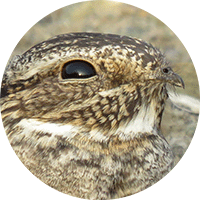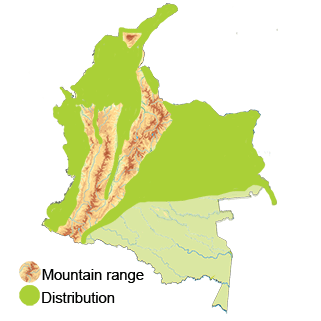Lesser Nighthawk
The Lesser Nighthawk (Chordeiles acutipennis) Read in Spanish
Appearance: The Lesser Nighthawk is a medium-sized nightjar with a distinctive appearance. It has a mottled gray-brown plumage that provides excellent camouflage during the day. These birds have long, pointed wings, a short bill surrounded by sensitive bristles, and a wide mouth for catching insects in flight. Their cryptic coloration and intricate patterns help them blend in seamlessly with their surroundings.
Habitat: Lesser Nighthawks are typically found in a variety of open habitats, including savannas, grasslands, scrublands, agricultural fields, forest edges, and urban areas. They prefer areas with scattered trees or shrubs where they can roost and nest, as well as open spaces for foraging.
Behavior: Nocturnal and crepuscular in nature, Lesser Nighthawks are most active during dawn and dusk. They are aerial insectivores, flying gracefully to catch insects in flight using their agile flight maneuvers. During the day, they typically roost on the ground or on low perches, relying on their cryptic plumage for camouflage.
Breeding: The breeding season of Lesser Nighthawks varies depending on their range, but typically occurs during the warmer months. Males perform courtship displays, including aerial acrobatics and vocalizations, to attract females. Females lay typically two eggs on the ground, often in a scrape or depression hidden among vegetation. Both parents share incubation duties, and after hatching, they feed the chicks a diet of insects until they fledge.
Conservation Status: The conservation status of the Lesser Nighthawk is generally considered to be of least concern globally.
Distribution
The Lesser Nighthawk (Chordeiles acutipennis), a close relative of the Antillean Nighthawk.
Caribbean Region: The Lesser Nighthawk can be found in the Caribbean region, including coastal areas and adjacent lowland habitats. This region typically includes areas in departments such as Atlántico, Bolívar, Cesar, La Guajira, Magdalena, and Sucre.
Andean Region: The Lesser Nighthawk may also be present in parts of the Andean region of Colombia, particularly in lower elevation areas with suitable habitats. In the Andean region, they may be found in departments such as Antioquia, Boyacá, Caldas, Cundinamarca, and Valle del Cauca.
Orinoco Region: This species can also occur in the Orinoco region of Colombia, which encompasses areas along the eastern plains and bordering Venezuela. In this region, suitable habitats for Lesser Nighthawks may be found in departments like Arauca, Casanare, Meta, and Vichada.
Amazon Region: The Amazon region of Colombia, with its extensive tropical rainforest and diverse habitats, may also host populations of Lesser Nighthawks. Departments such as Amazonas, Caquetá, Guaviare, Putumayo, and Vaupés within the Amazon region could potentially support this species.
Pacific Region: While less common, the Lesser Nighthawk may also occur in parts of the Pacific region of Colombia, including coastal and lowland areas near the Pacific Ocean. Regions like Chocó and Nariño may provide suitable habitats for the species in the Pacific region.
Taxonomy
The Lesser Nighthawk (Chordeiles acutipennis)
- Kingdom: Animalia
- Phylum: Chordata
- Class: Aves (Birds)
- Order: Caprimulgiformes
- Family: Caprimulgidae
- Genus: Chordeiles
- Species: Chordeiles acutipennis
Vocalization
The Lesser Nighthawk (Chordeiles acutipennis)
- Chirping Calls: The primary vocalization of the Lesser Nighthawk is a series of distinctive chirping calls emitted during flight or while perched These chirping calls are typically short and rapid, often described as a soft "peent" or "pik" sound repeated at regular intervals. The frequency and rhythm of the chirping calls may vary depending on the context, such as courtship displays, territorial behavior, or group communication.
- Booming Sound: During courtship displays, male Lesser Nighthawks may produce a booming sound known as a "booming" or "boom call." The booming call is a deep, resonant sound created by the male diving steeply from a height and pulling out before reaching the ground, producing a distinctive pulsating noise with its tail feathers.
- Churring Sounds: In addition to chirping calls and booming sounds, Lesser Nighthawks may also emit churring sounds during interactions with conspecifics or in response to perceived threats. Churring sounds are low, guttural vocalizations that convey agitation, alarm, or territorial defense.
- Dusk and Dawn Calls: The Lesser Nighthawk is most vocal at dawn and dusk, corresponding to its crepuscular and nocturnal activity patterns. During these times, individuals may engage in vocalizations to establish territories, attract mates, or communicate with other members of their group.





